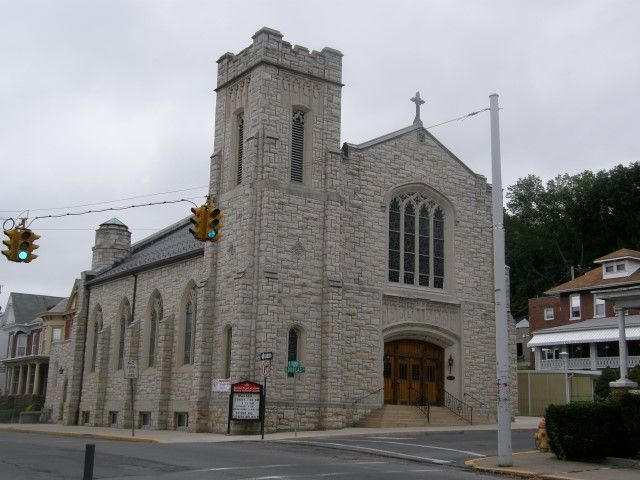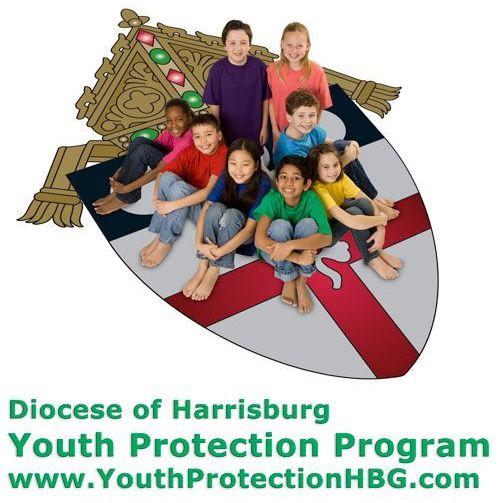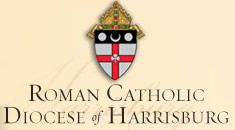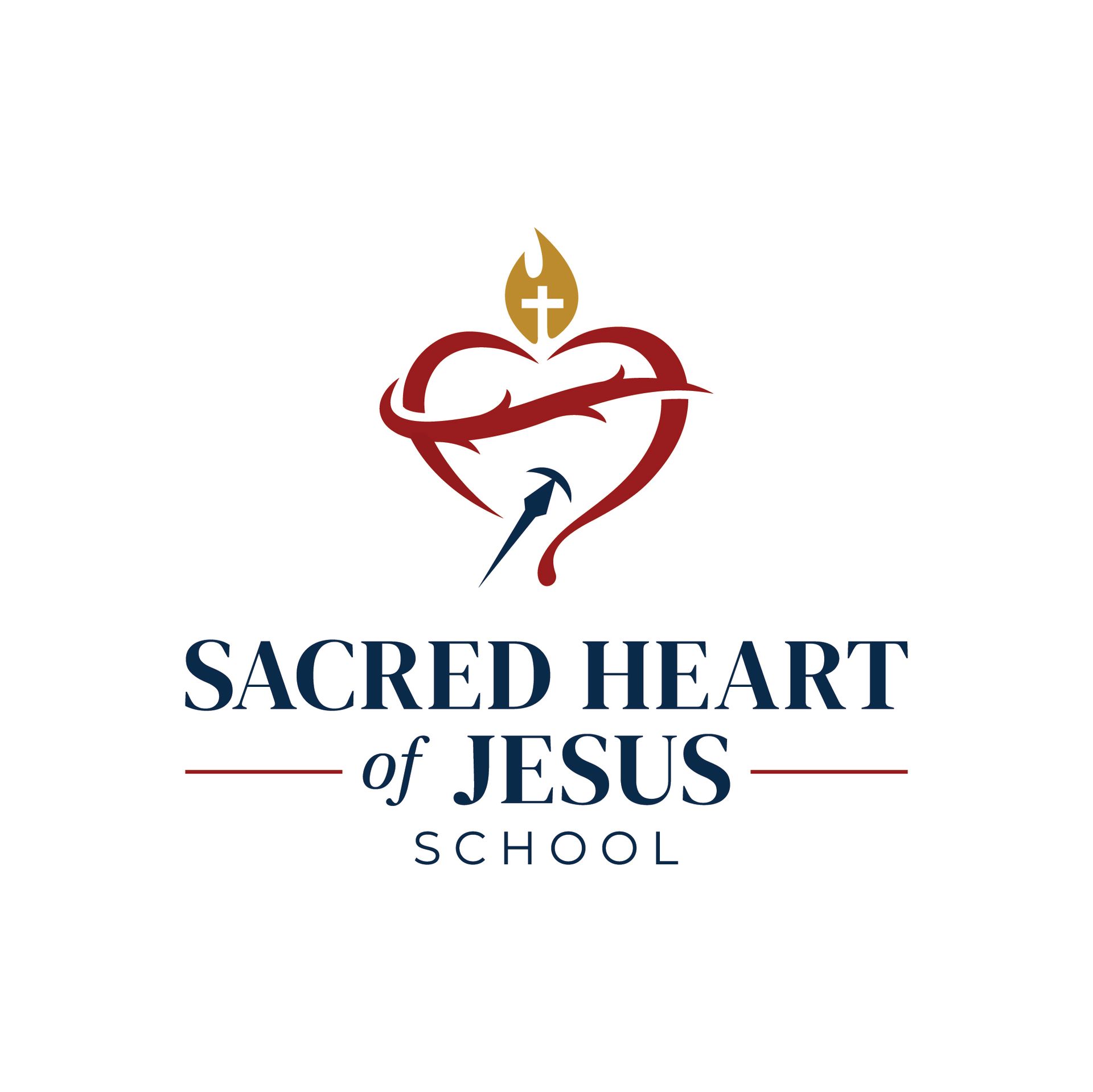About Our Parish
HISTORY OF SACRED HEART OF JESUS
Catholics from other countries settled here and fought in the Indian Wars and the American Revolution. Then in 1826 the construction of the Pennsylvania Canal brought to the area many Irish and German settlers. The Catholic population grew to such an extent that in 1827 a request was sent to the Bishop of Philadelphia asking that the they receive the services of a priest from time to time. Consequently, in April of 1828 the Bishop purchased the land on which our present church stands. Not only was a chapel constructed, but land for burial was also acquired. All Saints Chapel was erected in 1830, and adjacent to the frame church, a brick house for the pastor was built. The original church had primitive furnishings, a stove in the center, small benches, and ordinary windows.
By 1871 the church could no longer accommodate the growing number of parishioners. It was demolished and replaced by a larger brick structure. In the same year, it was recognized as a parish with a resident pastor and given the name of Sacred Heart of Jesus Church. During the next ten years the rectory was renovated and the interior of the church enhanced with frescoing and stained glass windows. Ground for the present-day cemetery was also secured at this time.
Because industries such as Standard Steel Works and the Viscose Plant brought to the community many Catholics, a new church again had to be constructed. While this structure with the capacity of 550 people was being erected in 1921, Catholics attended Mass in a temporary wooden structure built in the cemetery and also in the Rialto Theater. The cornerstone was laid April 30, 1922, while the church itself was dedicated on July 22, 1923.
Catholics from other countries settled here and fought in the Indian Wars and the American Revolution. Then in 1826 the construction of the Pennsylvania Canal brought to the area many Irish and German settlers. The Catholic population grew to such an extent that in 1827 a request was sent to the Bishop of Philadelphia asking that the they receive the services of a priest from time to time. Consequently, in April of 1828 the Bishop purchased the land on which our present church stands. Not only was a chapel constructed, but land for burial was also acquired. All Saints Chapel was erected in 1830, and adjacent to the frame church, a brick house for the pastor was built. The original church had primitive furnishings, a stove in the center, small benches, and ordinary windows.
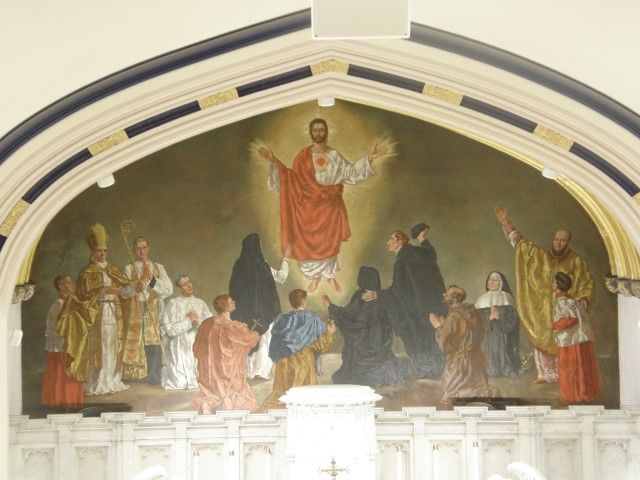
By 1871 the church could no longer accommodate the growing number of parishioners. It was demolished and replaced by a larger brick structure. In the same year, it was recognized as a parish with a resident pastor and given the name of Sacred Heart of Jesus Church. During the next ten years the rectory was renovated and the interior of the church enhanced with frescoing and stained glass windows. Ground for the present-day cemetery was also secured at this time.
Because industries such as Standard Steel Works and the Viscose Plant brought to the community many Catholics, a new church again had to be constructed. While this structure with the capacity of 550 people was being erected in 1921, Catholics attended Mass in a temporary wooden structure built in the cemetery and also in the Rialto Theater. The cornerstone was laid April 30, 1922, while the church itself was dedicated on July 22, 1923.
Growing Through Change
With his death on April 2, 2005, Pope John Paul II's 26-year papacy of came to an end. Elected the first non-Italian pope in 455 years in 1978, John Paul II was to be the most -traveled Pope (104 trips to 127 countries, including 5 visits to the United States). He canonized an unprecedented 482 saints, could speak 8 languages, and was the first pope to visit a Muslim mosque and a Jewish synagogue.
Worldwide, we saw a 41% increase in the number of Catholics from 1978-2003. John Paul II is also credited with making a major contribution to the fall of Communism in Poland. But he was best known for his faithfulness to traditional Church doctrine. He was outspoken about the dignity of the human person and respect for life at all stages. His most eloquent statement on the subject was his resolve to continue his papacy despite infirmity and physical weakness. He also modeled forgiveness when he pardoned his would-be assassin in 1983. In an era of widespread media coverage, we were able to follow every step of his papacy with him, and in April 2014 he was canonized by Pope Francis.
The Diocese of Harrisburg has seen many changes in leadership over the past three decades. In 1983 Bishop Joseph T. Daly died, and Auxiliary Bishop William H. Keeler was appointed the seventh bishop of Harrisburg. When Bishop Keeler was named Archbishop of Baltimore in 1989, Bishop Nicholas C. Dattilo was named the eighth bishop of Harrisburg. In 2004, Bishop Dattilo died following a lengthy illness, and his successor, the Most Rev. Kevin C. Rhoades, became our new leader and the youngest bishop in the United States. He served until 2010, when he was transferred to a diocese in Indiana, and was succeeded by the Most Rev. Joseph P. McFadden, who died suddenly in 2013. Bishop Ronald W. Gainer was appointed Bishop of Harrisburg in 2014.
In 1994, the Vatican formally granted permission for girls to serve on the altar. Four years later, the Ecclesial Lay Ministry Program was inaugurated in the Diocese, widening the circle of lay involvement in response the low numbers of young men and women answering the call to vocations. In 1995, through a process of consultation, Bishop Dattilo closed many missions and parishes and merged them into already existing or newly established parishes. These mergers occurred in nearly every part of the Diocese, including ours. Although our mission church in Naginey had already closed.
Our own parish, too, has seen many changes. In 1995 the Queen of All Saints Church in Burnham officially became part of Sacred Heart of Jesus Parish, and a number of different pastors have guided us, including, since 1980, Rev. Charles McDermott, Rev. James Byrne, Rev. John Schmalhofer, Rev. Thomas Marickovic, Rev. John Bateman, and Rev. William Weary. A stream of Parochial Vicars have also contributed to the evolution of our parish. Sacred Heart has also seen an increase in lay ministries, including boys and girls serving on the altar, men and women serving as Extraordinary Ministers of Holy Communion, RCIA, Cantors, and the Knights of the Holy Temple. There has also been a renewed interest in service to the poor with the reinstatement of the St. Vincent de Paul Society and the opening of the Sacred Heart Thrift Shop. Our Music program has moved from the Latin rite and traditional music, to folk music, and back to traditional music with Latin used on special occasions. This program continues to thrive under the leadership of children and adult choirs by dedicated musicians.
In 2004, Sacred Heart of Jesus Parish became a tithing parish, making way for many of the recent renovations and an increase in our parish's ability to help others. Our Catholic school and CCD program are still instructing our young children in the faith, led by a dedicated lay administration and staff who slowly were phased in when the lack of vocations caused the religious orders serving the parish to withdraw in 1994. We continue to fill the church each Saturday and Sunday, giving thanks for all that was and is, and asking God's blessings on what is yet to come.
